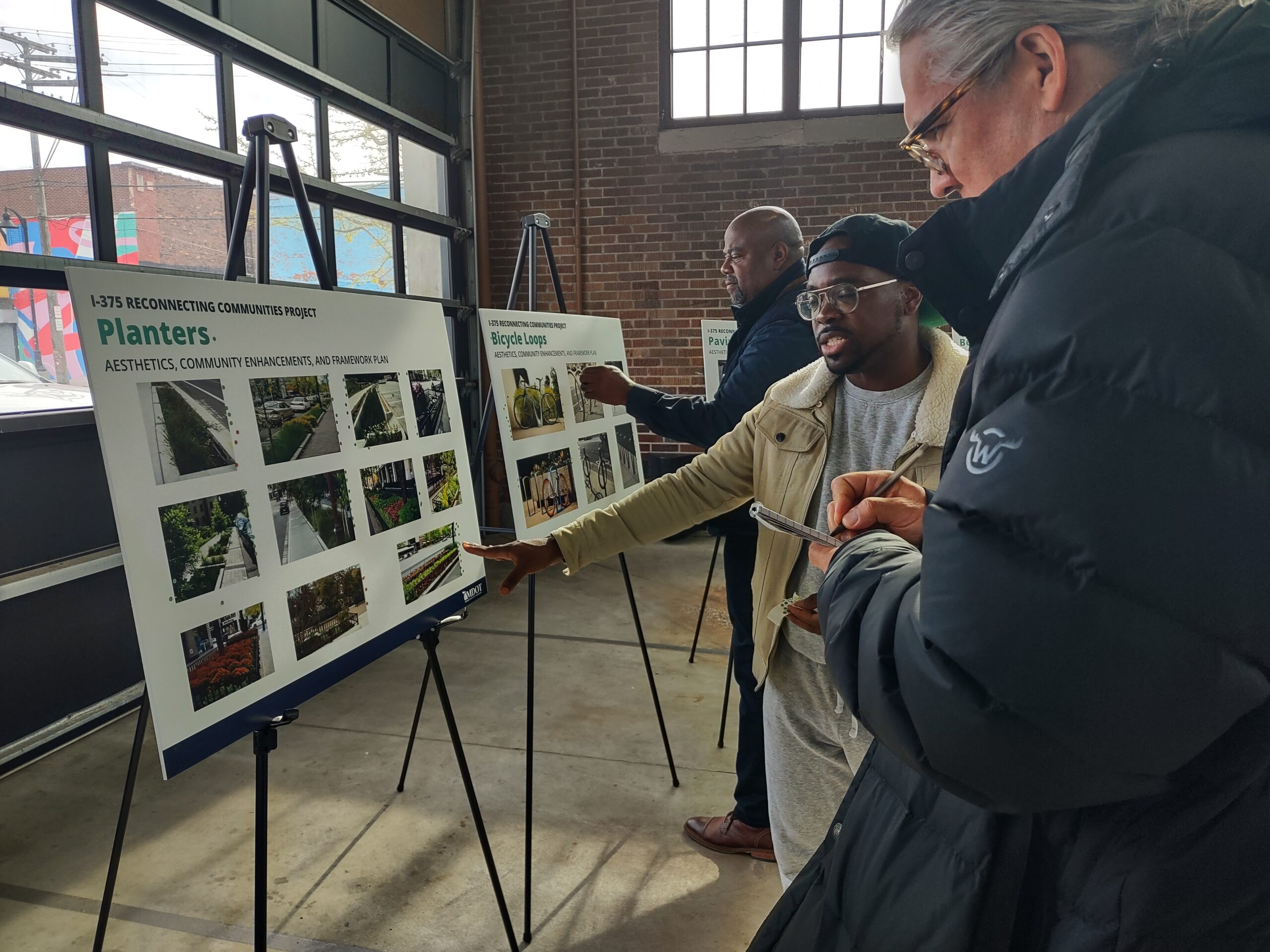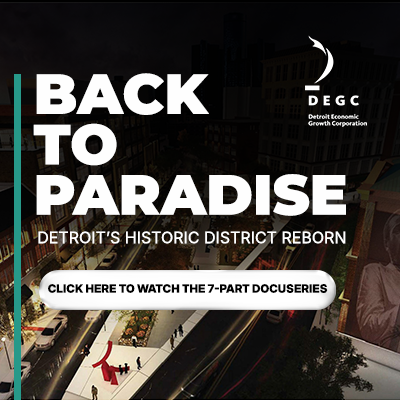According to Leslie Love, the Michigan Department of Transportation Metro Region’s (MDOT) Senior Executive Assistant Deputy Director the proposed repurposing the mile-long I-375 freeway is planning to take the deteriorating section of the highway system and pack it with dirt to the point that it’s a paved street-level boulevard. The department aims to start the project in 2025, with major construction occurring in 2026 through 2028.
However, the state transportation department’s grander vision, which they revealed at their I-375 Reconnecting Communities Project Open House on April 19 at Eastern Market’s Shed 3, is to offer an olive branch of sorts to Black Detroiters for destroying the thriving community that was the Black Bottom. The city wants to rebuild the area around the boulevard with Black-owned businesses and Black residents and Black employees benefiting from the businesses.
MDOT unfurled maps of how I-75 would be redirected, showed short film presentations of the project’s timelines and projected build-out, displayed posterboards of potential public art and other aesthetic options where attendees could vote for their favorites with sticky dots and had city historian Jamon Jordan on hand to place the current project in the historical context of immigration patterns, housing, slavery and colonization, the northern version of Jim Crow and the “urban renewal” program that created and eliminated the Black Bottom community.
“The project is transformative,” Love stated. “We’re hoping to make this a destination spot, a mature, grown-up Detroit that respects and honors the history that was there.”
But a still, achingly real question wafted through the open house: can a decommissioned, elevated freeway heal the collective broken heart of the Black Bottom?
“There is a long history of development and displacement in the history of the city of Detroit,” Jordan said to the Michigan Chronicle before his presentation. “The [history] of Black Bottom is well-known and misunderstood. People know about it, but they don’t know the intricacies of what happened to Black people in Black Bottom, Paradise Valley and Hasting Street. So, people need to understand that history first and how it’s involved in the new development. They need to know this history.”
But the history isn’t only for the lifelong Detroiters, but also the newcomers to the city and the people who live in [the Black Bottom] area but don’t know what happened, such as how Greektown and Lafayette Park can to be, Jordan said.
As far as the I-375 Project and its role in Detroit’s current renaissance, Jordan put it in perspective.
“Detroit has had a series of renaissances and, of course, declines,” Jordan observed. “And I’m always promoting that we as a city move forward and not back, but [the destruction of Black Bottom and Paradise Valley] is one of the seminal moments, the changing of everything that happens to the city of Detroit. It displaced 140,000 people in this predominantly Black neighborhood. It wipes out 350 businesses in Paradise Valley, and it destroys the strip that is Hastings Street. That strip is the foundational creation of the Black business environment in the city of Detroit.
What people know about Detroit, such as Motown, is because Hastings Street, Black Bottom and Paradise Valley, Jordan stated. “These things are connected to that history.”
Jordan articulated the floating question that moved through the event. “[The destruction of the area for I-375] stunted where Black Detroit could have gone. Many great things came out of the area. How many more things could have come out of it if the area wasn’t stunted or destroyed?”
The second benefit of knowing the history is when these new developments tries to displace people and destroy Black business areas like Black Bottom, Hastings Street and Paradise Valley, “we don’t let it happen again and, if it does happen, we are on alert about it and don’t let it happen again.”
That need to stand watch and witness the unfolding of the project is what brought Quinn Johnson and Nia Lee to the open house.
“My biggest concern is how they are going to bring Black business back into the area,” Johnson said. “They put a highway through all of Black history. It’s something that I’m definitely mindful of.”
Lee agreed. “I’m concerned that MDOT is going to say that this is for Black people, but it’s going to be platitudes. So, I’m hoping there’s some meaning and action behind it.”
Lee also expressed that MDOT needs to involve the community that still lives in that area, particularly the lives of the children in the neighborhood and the local schools.
Another concern Lee and Johnson shared is, in light of the city’s continued gentrification, this project doesn’t become another engine to make Detroit a chocolate city in abstraction, similar to Harlem in New York City.
For more information, including future open houses and other public forums, go to michigan.gov/I375.


